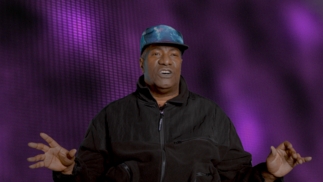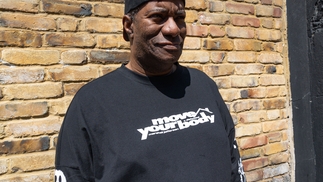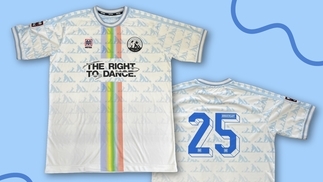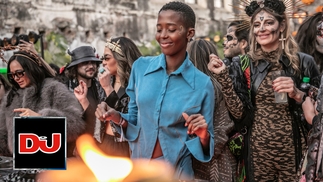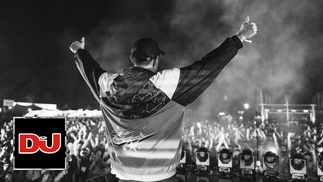STRONG FOUNDATIONS OF THE SCENE
It took decades and many mutations for dance music to develop into the genres we know today. Here's what happened before DJ Mag was born...

“In the beginning there was Jack... and Jack had a groove!” So the old Mr Fingers track goes, but of course music made for dancing to in clubs, as we know it now, began far earlier than the house that rose from Chicago in the mid-1980s. Before DJ Magazine’s birth in 1991 (prior to that, the magazine was called Jocks), dance records and club culture had been through a myriad different incarnations and evolutions.
You could arguably hark back to the first half of the 20th century to find rebellious youth going wild in the aisles to a soundtrack of jazz or rock & roll, but it was DJs such as New York’s Francis Grasso in the late 1960s at clubs such as The Sanctuary that really kicked the whole thing off.
Grasso, who passed away in 2001, is slightly better known nowadays thanks to Bill Brewster and Frank Broughton’s book Last Night A DJ Saved My Life and films like the documentary Maestro. He is thought to be the first DJ to really pioneer the art of beat-matching, mixing two records together to create a continuous, uninterrupted flow of dance music.
His diet of percussive rock and hard-edged soul would lay a granite-tough template for dance music’s emphasis on drums, and prior to many of the early hip-hop DJs, he would keep a beat going, mixing between two copies of the same record. His job was certainly harder than that of later vinyl DJs, being that he had to use 7” records — 12”s wouldn’t be invented till the mid-’70s.
The late 1960s was a fecund era in the UK too, especially where early electronic music was concerned. The BBC Radiophonic Workshop, not only soundtrack artists for BBC radio and TV shows but also fearless electronic music experimentalists, were at their height.
Daphne Oram and Delia Derbyshire made electronic tracks that mixed musique concrete with aspects of the burgeoning psychedelic rock movement. Derbyshire in particular pushed the envelope, not only in her infamous Doctor Who theme (hear it and leap behind the sofa in fear), but also in her trippy work as part of the band The White Noise. These electronic oscillations would be crucial building blocks for dance music’s incorporation of machine-made sounds.
While Derbyshire’s efforts would be recognized much later, what Francis Grasso played would lay the early foundations of disco music, which began to bloom in New York City through the early ’70s. Meanwhile, soul was mutating into the heavier, more politically conscious Afrocentricity of funk.
Funk, effectively created by soul singer and band leader James Brown (or at least widely attributed to him for the 1967 track ‘Cold Sweat’), was a repetitive dance groove, characterized by rhythmic basslines that started “on the one” – having to return to their root note every couple of bars, but meandering in funky directions otherwise. The drums were tougher than in soul, were EQ’d higher in the mix, and many of James Brown’s later tunes as he refined the funk sound featured short sections where the drummer was given a guest spot to demonstrate his skill.
Clyde Stubblefield and John 'Jabo' Starks played dazzling, polyrhythmic drum-breaks on tunes like, well, ‘Funky Drummer Parts 1 & 2’, the James Brown-produced ‘Think’ by Lyn Collins, and ‘Funky President’, beats that laid the foundation for hip-hop, hardcore, jungle and drum & bass, sampled so endlessly as to become part of the wider fabric of music, instantly recognizable.
Probably the most well-known of all breakbeats came from a source less obvious. ‘Amen Brother’ was a b-side by ’60s gospel soul outfit The Winstons, and the crazed funk of the drum-break on that record played by GC Coleman — insanely tough and heavy, seemingly out of place with the rest of the breezy soul instrumental — became the go-to beat for jungle producers after its early use in hip-hop by artists like Kurtis Mantronik.
In the 1970s, singer and bandleader George Clinton and his twin bands of acid-fried pranksters Funkadelic and Parliament were redrawing the parameters of funk and setting the groundwork of the later electronic dance revolutions. Funkadelic were a trippy black rock outfit initially, fuelled by industrial quantities of psychedelics, but later morphed into a funk group. Parliament, known for elaborate stage shows full of wild props and anarchic humour, pledged allegiance to the funk pretty much from the beginning.
Creating Afro-futurist, madcap sci-fi worlds within their music and on their record sleeves, they started using synths early. Parliament’s ‘Flashlight’ is one of the earliest examples of a funky synth bassline providing the hook on a track, Bernie Worrell’s wild riff capturing the imagination of disco producers and especially the imagination of young listeners in Chicago and Detroit, who would later incorporate similar ideas into their house and techno music. These bands also had an inestimable influence on hip-hop, particularly the synthy, laidback sound of West Coast gangsta rap.
Running counter to the evolution of funk, Northern soul was a very specific kind of music played at northern English clubs such as Manchester’s Twisted Wheel, the Blackpool Mecca and Wigan Casino from the late ’60s and through the ’70s. It gathered a huge following in the UK, and aspects of its club culture such as all-night dancing, the use of 'club drugs', its fashion and fetishisation of rare, hard-to-obtain records would become entrenched aspects of later developments in dance.
Over in Jamaica — as the country forged its own musical identity through ska, bluebeat and reggae — the notion of the studio producer became increasingly key as the 1970s progressed. Producers such as King Tubby, Lee 'Scratch' Perry, Joe Gibbs and Scientist began to experiment with the possibilities of the studio desk, using reverb and delay tape effects to manipulate sound.
Dub was the result, a phantasmagoric sound that reached its psychotropic apex in records like Lee Perry’s ‘Blackboard Jungle Dub’ and in The Congos’ ‘Heart Of The Congos’, also produced by Perry. Eerie, echoed out to infinity, but also rooted in heavy drum and bass rhythms, Perry laced these records with field recordings of cows mooing and other weird sounds. The idea of the studio as an instrument was becoming prominent and the kind of echo delay effects employed by these dub producers still form a key weapon in dance producers’ arsenal nowadays.
Like dub, disco was a producer’s art. In the USA, soul records that began to emerge with a 4/4 backbeat were elongated for dancers by producers such as Tom Moulton, pioneer of the first remix with BT Express’s ‘Do It Till You’re Satisfied’ and first 12” with Al Downing’s ‘I’ll Be Holding On’. Splicing tape to create extended edits, to satisfy an increased desire by dancers to stay on the floor, other producers such as Walter Gibbons — also a DJ — began to incorporate dub-style effects into their mixes, elevating the remix from simply an extended edit version into a standalone work of art discrete from the original track.
Parallel to disco, something else was happening in New York City, bubbling in the Bronx. Jamaican émigré Kool DJ Herc had begun to host his own parties where he would play reggae records to fellow Bronx dwellers and toast hype man lyrics over the top, in true Jamaican soundsystem style.
The reggae music didn’t go down well for the most part, so he switched his musical diet to soul and funk, but kept MCing over the top. Crucially, Herc isolated the drum-breaks and would loop them by switching between two copies of the same record, kicking off a craze for b-boys and b-girls to breakdance to them, and effectively inventing hip-hop in the notion of rapping over artificially ‘sampled’ beats.
Grandmaster Flash and Afrika Bambaataa would become more famous early hip-hop DJs and ambassadors, famed for their scratching techniques, encyclopedic record collections and incorporation of electronic records into the funk continuum — specifically Afrika Bambaataa’s playing of various Kraftwerk and Gary Numan records in his DJ sets. Bambaataa would, of course, later set the template for the electro genre with his record produced alongside Arthur Baker, ‘Planet Rock’, which replayed portions from two Kraftwerk tunes, ‘Numbers’ and ‘Trans Europe Express’, and Flash would hit the mainstream with hit records such as ‘White Lines’ and ‘The Message’.
Though disco with its primarily gay audience initially was considered a separate entity to hip-hop (up until its brush with the pop industry and Saturday Night Fever) — that ran (supposedly) counter to the tough guy machismo of the Bronx-born genre — many of the early rap records featured replayed disco music. Disco was also a fertile source of breakbeats for DJs — even if the club-goers for each style didn’t often mingle. Think of Sugarhill Gang’s hijack of Chic’s ‘Good Times’ or the regular sampling of Salsoul disco classic ‘Sing Sing’ by Gaz in rap tracks for just two examples.
When disco was interpreted by Europeans, dance music took another quantum leap into the future. The Italian Giorgio Moroder had worked with American soul singer Donna Summer on the extended, sultry funk of 1975’s ‘Love To Love You Baby’, but it was his production work on her 1977 hit ‘I Feel Love’ — with its arpeggiating, space-age synth groove — that would clear the way for dance music to become more electronic, especially in the extended, trippy 15-minute remix by San Francisco disco producer and electronic genius Patrick Cowley. Alongside Kraftwerk’s records ‘Autobahn’, ‘Trans Europe Express’, ‘Man Machine’ and ‘Computer World’, it indicated novel directions for dance music’s future.
While dance music had been dominated by men behind the boards, women had become increasingly visible pioneers as the ’70s came to a close — primarily as musicians or singers. Disco singers like Donna Summer, Chaka Khan (previously of the band Rufus), Thelma Houston, Gloria Gaynor and Loleatta Holloway were the fierce, soulful voices of the genre.
Grace Jones made an indelible mark for her records fusing disco, reggae and punk with a large dash of charisma and style, while Talking Heads bassist Tina Weymouth was hugely influential in helping bridge the gap between the worlds of punk and dance music, stepping between the two effortlessly.
Disco supposedly died after it hit the mainstream and was castigated in the US media by homophobic and racist radio DJs, and in the disturbing destruction of masses of disco records like the Disco Demolition Night at the Comiskey Park baseball field in Chicago, 1979.
But disco regrouped, became slower, more electronic, and morphed into boogie and freestyle, glistening 1980s funk records with synth basslines and electronic textures, pushed by labels such as West End and Prelude, remixer/producers François Kevorkian and Jellybean and DJs such as the ingenious Larry Levan (see feature on page 94) at the Paradise Garage club, and David Mancuso at the invite-only Loft parties, both in New York.
Records made in England by post-punk bands New Order (‘Blue Monday’), Section 25 (‘Looking From A Hilltop’), Visage (‘Frequency 7’), Soft Cell (Memorabilia’) and many others would forge their own electronic dance sound that was picked up around the world. In Chicago, DJs such as house pioneers Frankie Knuckles at The Warehouse and Ron Hardy at the Muzic Box would play European dance records next to disco, laying the foundations of the new sound of house music.
Tunes fusing both elements in a new stripped-down electronic package began to appear in Chicago, from Jesse Saunders’ Italo-cribbing ‘On & On’ to Jamie Principle’s ‘Your Love’, Marshall Jefferson’s ‘Move Your Body (House Music Anthem)’ and tracks by Chip E, Steve 'Silk' Hurley and Mike Dunn.
A hippy hideaway since the 1960s, the Balearic island of Ibiza had developed its own burgeoning club culture. Venues such as Pacha, Ku and Amnesia had garnered a reputation as great discos frequented by a cosmopolitan bunch of jetsetters and funky freaks. DJs Leo Mas and Alfredo at San Rafael’s open-air club Amnesia pioneered a trippy patchwork mixture of early house, post-punk, reggae, disco and electronic oddities that became known as Balearic beat.
When Brits Nicky Holloway, Trevor Fung, Ian Saint Paul, Johnny Walker and Danny Rampling visited in 1987 to celebrate their friend Paul Oakenfold’s birthday, they were completely awed by the sounds they heard and vibes they experienced at Amnesia.
Rampling and Oakenfold decided to import a flavour of their Balearic experience with club-nights they launched when back in the UK. Rampling alongside his then-wife Jenny created Shoom! in London’s Southwark, where he DJ'd and helped kick off the UK acid house explosion, while Oakenfold (previously a soul and hip-hop DJ, then in hock to house) launched the hugely popular Spectrum, where the chill-out area, The White Room, featured DJs like Dr Alex Paterson, later of The Orb.
While this was going on in London, Manchester’s Haçienda was bubbling too. Rob Gretton, Factory Records owner Antony Wilson and the band New Order had launched the iconic club back in 1982, and while its soundtrack started out as the archetypal early ’80s mixture of electronic disco, EBM, Italo and post-punk, in 1986 Mike Pickering, Little Martin and Graeme Park began the Nude Friday night session, one of the first club-nights in the UK to play house.
Pickering, who had been in disco-punk band Quando Quango and who made early house as T-Coy (the great ‘Carino’) and pop dance as M-People, launched another night in 1988, Hot, with Jon DaSilva, aiming to capture some of the Balearic magic, and playing tracks by Manchester’s new house hotshots like A Guy Called Gerald (‘Voodoo Ray’) and 808 State (‘Pacific State’).
The Haçienda, of course, became synonymous with UK club culture, known for its unique interior, raw atmosphere and as a launching pad for many great DJs, until its eventual closure in 1997.
Back in the USA in the late ’80s, house music was morphing into weird new shapes. Chicago’s DJ Pierre, Spanky and Herb J, and their group Phuture, made an avant-garde dance record with Roland’s TB-303 bass synthesizer.
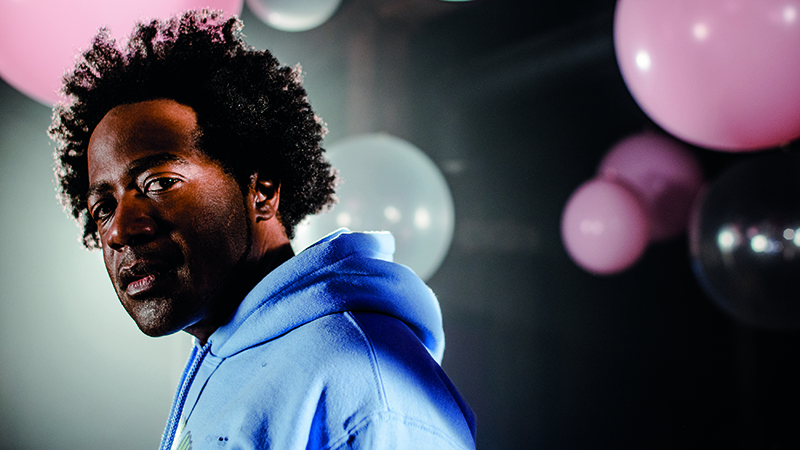
A set of weird psychedelic squidges and bleeps set over a thundering 4/4 kick-drum, ‘Acid Tracks’ baffled a lot of people but got picked up by the pioneering DJ Ron Hardy, who played the record to death in hedonistic club Muzic Box. Though the 303 had been used in dance records before, this application of it, twisting and manipulating acid sounds from the device, was new, and set off a craze for acid (the musical kind), still subject to periodic revivals.
In Detroit, another Mid-Western conurbation not far from the Windy City, DJ The Electrifying Mojo had been mixing a weird selection of records on his late-night “Landing of the Mothership” radio show on the WJLB station, from George Clinton to Kraftwerk, The B-52s to Prince.
This was a big influence on the Belleville Three, three young DJ/producers from the suburban area of Belleville outside of downtown Detroit who attended high school together. Juan Atkins, Kevin Saunderson and Derrick May worked together and apart to cement the idea of Detroit techno, once described by May as “George Clinton and Kraftwerk stuck in an elevator”.
As suggested, techno took cues from black American dance music and added a cold, stiff European sonic element, sometimes dropping sci-fi philosophies into the mix. This yielded incredible records such as Model 500’s ‘No UFOs’, Derrick May’s ‘Strings Of Life’ (as Rhythim is Rhythim), hugely influential in the UK, and Kevin Saunderson’s ‘Big Fun’ and ‘Good Life’ (as Inner City), both hits in the UK pop chart as well as being bona-fide dancefloor belters.
Atkins had been a part of the group Cybotron as well with Richard Davis, an earlier electro-funk outfit that created seminal records like ‘Clear’. Detroit techno is still a primary influence in dance music, its fusion of funk and machines a seductive combination.
In New York City at the same time, from whence so much dance music culture had already emanated, Queens DJ/producer Joey Beltram was busy creating two tracks that would forever change dance music. One, ‘Energy Flash’, was a pitch-black slab of druggy acid house, its dark, compelling sound laying the groundwork for techno’s harder mutation, Belgian hardcore, and the coming UK rave sound. ‘Mentasm’, meanwhile, made with Mundo Muzique under the name Second Phase, introduced the nasty, evil rave 'hoover' sound, which has since became a key sonic trope in many strands of dance music, from UK hard house to tech-step, dubstep and beyond.
In Sheffield, England, LFO were perfecting their bleep techno sound with their self-titled, sub-bass-heavy ‘LFO’ single; and in Hackney, London, Shut Up & Dance were crystallising the breakbeat-laden hardcore they became known for. By 1991, the dance scene had grown so huge and varied, it was the perfect time to launch a new dedicated magazine title to keep track of it. Thus, DJ Mag was born...
Words: Ben Murphy


